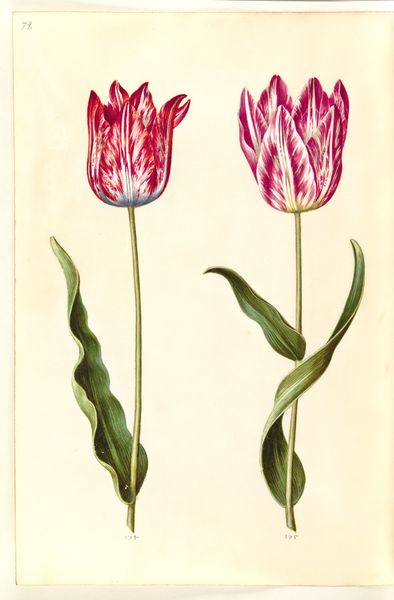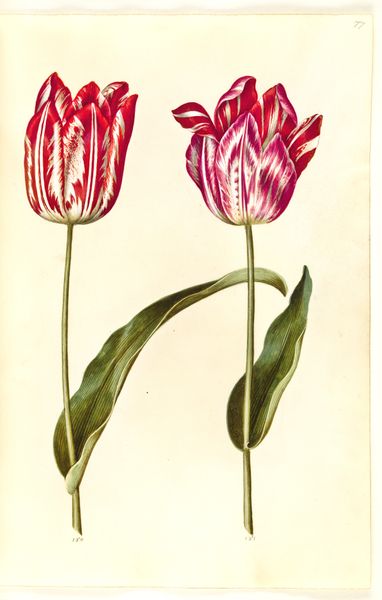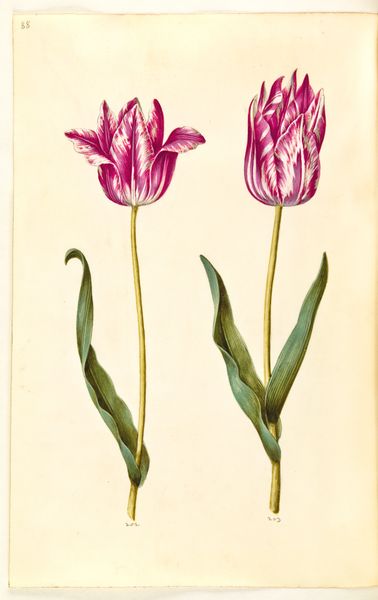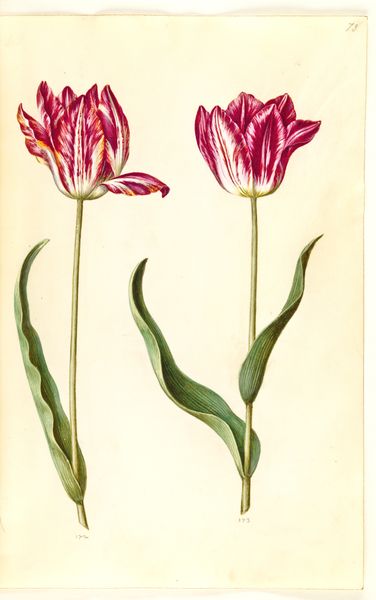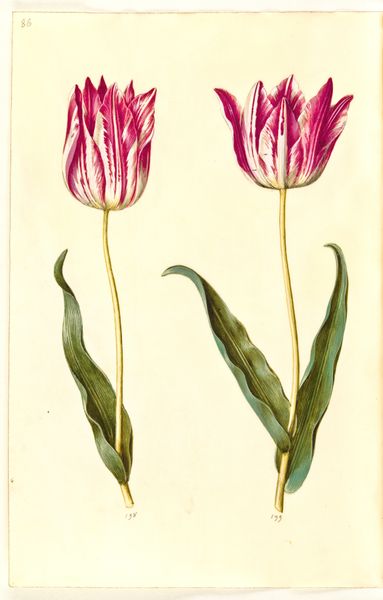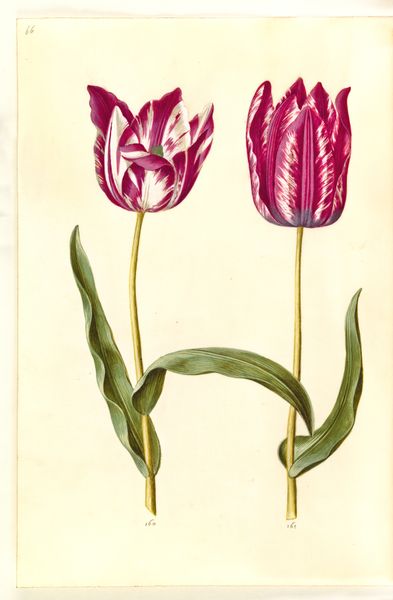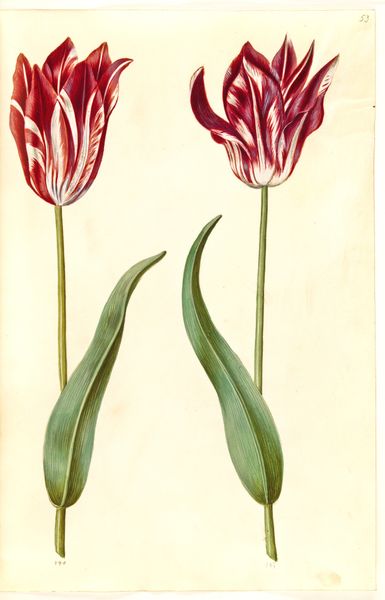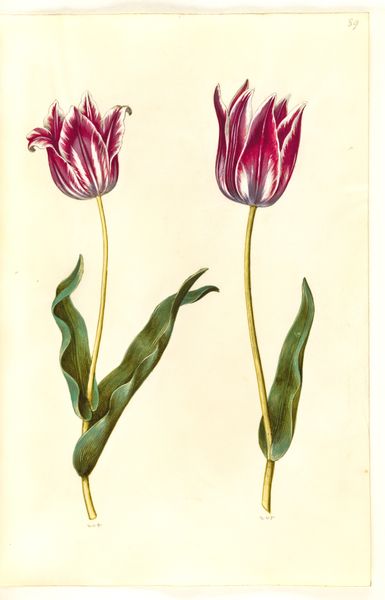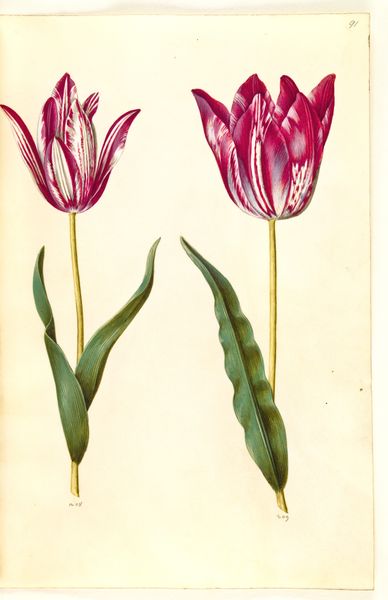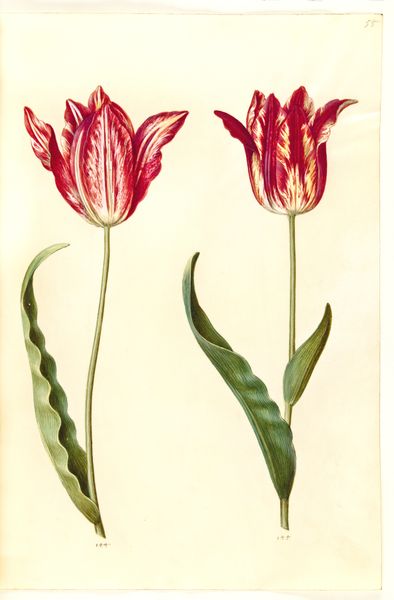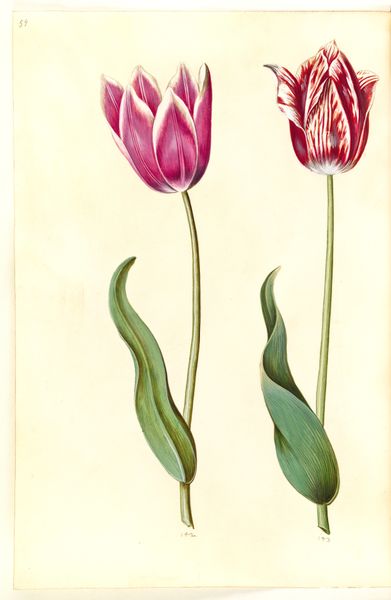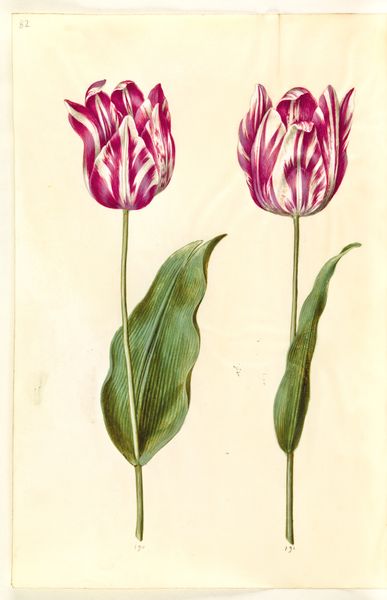
drawing, gouache
#
drawing
#
gouache
#
11_renaissance
#
northern-renaissance
#
botanical art
Dimensions: 375 mm (height) x 265 mm (width) x 85 mm (depth) (monteringsmaal), 358 mm (height) x 250 mm (width) (bladmaal)
Curator: Here we have Hans Simon Holtzbecker's "Tulipa gesneriana," or "Have-Tulipan," rendered in gouache and drawing sometime between 1635 and 1664. Editor: What strikes me immediately is the crisp, almost scientific precision with which he’s captured these tulips. You can practically feel the cool smoothness of the paper and the delicate veining in the petals. Curator: Absolutely, and it speaks to the Dutch Golden Age's obsession with tulips. More than just flowers, they became powerful symbols of wealth and status, visual markers in a rapidly changing social landscape. Editor: Beyond the symbolism, the materiality of this piece is interesting. Gouache gives such a beautiful matte finish, a sort of controlled chalkiness that makes the colours vibrant and grounded simultaneously. How does that medium influence its longevity, I wonder? Curator: It’s fascinating how Holtzbecker has employed colour, not merely to replicate nature, but to convey cultural weight. White signifies purity, and that vivid red can be linked to power, passion, even danger when associated with monetary speculations around tulips! These connotations weren't arbitrary; they fed into the collective consciousness. Editor: Thinking about the process, the layered application of paint and the meticulous linework tell us so much about Holtzbecker’s own labor. It must have taken hours, days perhaps, to complete this botanical portrait, an act of devotion almost, reflecting society's fervent obsession with owning the rare breeds depicted in it. Curator: Yes, indeed. Holtzbecker offers us more than just flowers on paper. He hands us a rich document, ripe with the anxieties and aspirations of a bygone era. Editor: For me, this careful record speaks to both the preciousness of labor and the speculative forces swirling around what was literally produced. A simple plant, made significant.
Comments
No comments
Be the first to comment and join the conversation on the ultimate creative platform.
